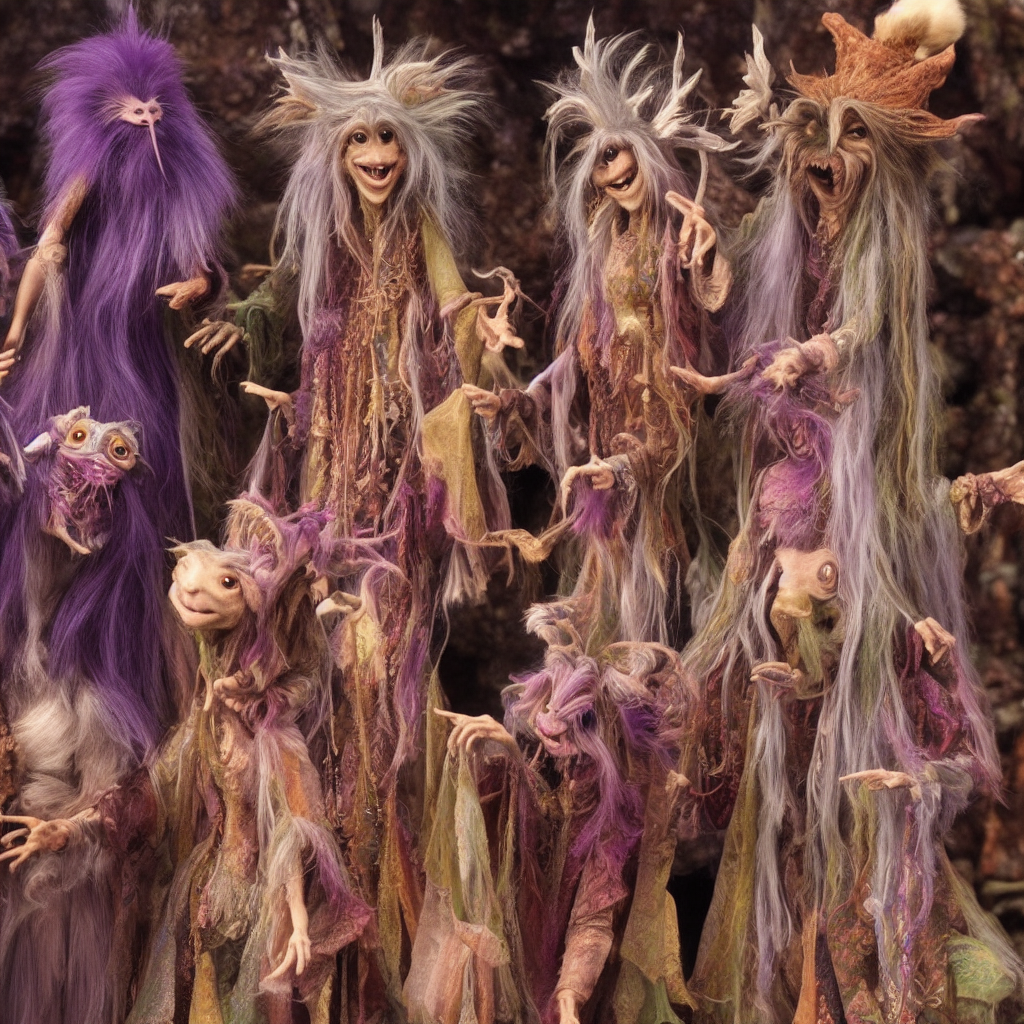Jim Henson’s 1982 puppet epic The Dark Crystal features a race of gentle beings known as Mystics. Central to the lives of the Mystics are a series of musical rituals, the dissonance of which, seriously belies the gentle nature of these fraggle-faced hunchbacks. Behold the Mystic’s Chord!
What a chord! It’s like three chords in one! This reminds me of the way religion used to scare me as a child (or how this movie use to scare me). The Mystics sing an octochord, each sustaining a single tone to form a chord made up of 8 unique tones, and yet this mantric auming doesn’t fit into any clear-cut tonality. No, this octochord is modernist all the way―a kind of serial tone row that suggests many tonalities. It begins seemingly in the scale of B Harmonic Minor, the first tones of which form a B Minor Augmented 7th, but soon changes to a C Augmented formation, which further muddies the harmonic structure, until it resolves on a strong G# Power Chord. Click on the play button, drag over the noteheads, or push the square button for a musical analysis.
If we arrange the tones in order, they form a very interesting synthetic scale. How does one make a synthetic scale? Well, take an ordinary B Minor Scale and add accidentals (sharps and flats) wherever you feel like (except the root), and you’ll come out with something suggestive of B-like Tonality, except with a completely novel tonal character.
The Mystic’s Scale is like a B Minor Scale, with the 2nd and 4th are flatted, and the 6th and 7th sharped. This creates a chromatic environment surrounding the root, with the 7th and the 2nd only a semitone away. This kind of dissonance is the essence of a ‘synthetic scalar’ sound, for they are not found in the popular major/minor modes. It is the chromatics, the major/minor ambiguity, that make the Mystic Scale highly dissonant and other-sounding.
There is another popular Mystic Chord used by Russian composer Alexander Scriabin. This chord is similar to the Mystic’s Chord, in that it features many unrelated chord’s stacked atop one another. The dissonances inherent in synthetic scales are mitigated by sounding adjacent tones in different octaves.
It has been said that “a chord is a melody stretched to the size of a moment”.
Indeed, a melody is a chord that’s been unraveled from within.
For Jupiter’s sake, how did musicians ever invoke the mystical before Standard Tuning when Synthetic Scales were born, incubating in their cradles for a 100 years to be rocked!





Hey Alexis. I cherish your feedback and am happy to hear you find this useful in your musical tutelage. So, thank you!